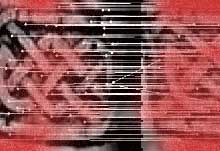Michigan State University researchers have created a system that could allow police to identify individuals by matching marks on their body with those stored in a computer database.
Personal identity is usually established by police using passports, licenses or personal identification numbers, but these are easily forged, lost or stolen. What is more, these types of credentials are neither sufficiently reliable nor secure.
A better means to recognise people is to use biometric systems that can identify them from their fingerprints, iris or face.
But Anil Jain, Michigan State University's distinguished professor of computer science and engineering is taking biometric recognition one step further by adding scar, mark and tattoo recognition capabilities.
Called 'Tattoo-ID', the system Prof Jain has been working on includes an annotated database containing images of scars, marks and tattoos provided by the police.
In use, the system matches a suspect or a victim’s distinguishing marks against the database and determines the suspect’s identity with very high accuracy. While a scar, mark or tattoo cannot uniquely identify a person, it can help the authorities narrow down the list of potential identities. It can also indicate membership in a gang, social and religious group or military unit.
Prof Jain said that if an officer arrests a person who does not have any identifying documents and uses an alias, but has a tattoo belonging to a known gang, the tattoo gives additional evidence to identify which group the person belongs to.
For recognising the deceased, the system could be extremely useful. 'A body can decompose quickly, particularly in adverse climate conditions, making it difficult to perform face or fingerprint identification,' Prof Jain said. 'But because tattoo pigments are deeply embedded in the skin, even severe skin burns often do not destroy tattoos.'
Prof Jain’s research team is continuing its research to improve the performance of the tattoo image matching system in collaboration with the Michigan State Police Identification Section, which has provided him access to its large tattoo image database.

An example of two similar tattoos that can be automatically retrieved by using a software program developed at MSU




Nanogenerator consumes CO2 to generate electricity
Whoopee, they've solved how to keep a light on but not a lot else.